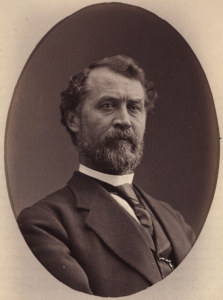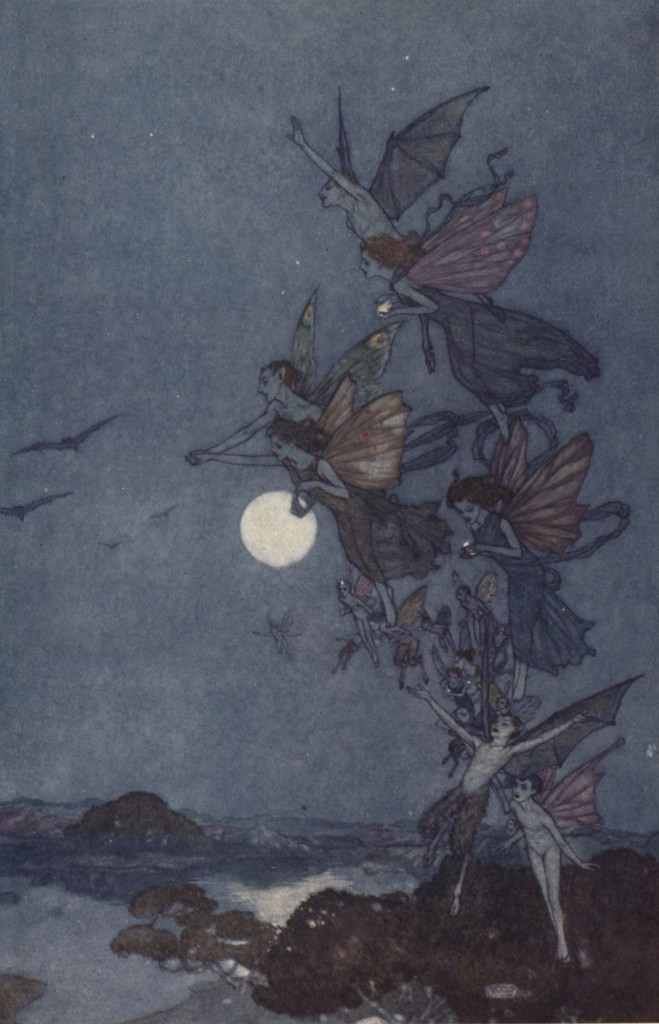By Kevin Grace.

Enoch Carson was enthralled with William Shakespeare. While the 19th century Cincinnati entrepreneur and civil servant made his fortune in the lamp and gas business, he considered his real wealth to be the hundreds of Shakespeare volumes that he accumulated. For the most part Carson was a self-educated man, attributing his intellectual development to his years spent reading the plays. So, he devoted his life to building a library of as many editions of the bard as he could afford. At one point Carson took his volumes of the prominent Charles Knight 1839 London edition of the plays and disbound them so he could insert the huge number of engravings he had collected, his intent to visually supplement his enjoyment of Hamlet, Macbeth, The Merry Wives of Windsor, and all the rest.
And during the Civil War, as a Lincoln political appointee to collect the tolls for the Cincinnati port, Enoch Carson decided to raise money for the benefit of soldiers’ families. On February 6, 1865, just a few months before the end of the war, Carson mounted a production of Hamlet at Pike’s Opera House. He recruited many of the prominent Cincinnati military men and politicians to play the parts (Lieutenant Governor Charles Anderson assumed the role of Hamlet), and he took to the stage himself as the first gravedigger who digs up poor Yorick.
 So in 1898 when University of Cincinnati board member William A. Procter purchased the Carson collection and presented it to the university, the gift was much more than a gathering of books. Enoch Carson’s Shakespeariana was the embodiment of a city’s love of literature and the stage as well as a solid foundation for academic study. His hundreds of volumes constitute one of the founding collections of the University of Cincinnati Libraries.
So in 1898 when University of Cincinnati board member William A. Procter purchased the Carson collection and presented it to the university, the gift was much more than a gathering of books. Enoch Carson’s Shakespeariana was the embodiment of a city’s love of literature and the stage as well as a solid foundation for academic study. His hundreds of volumes constitute one of the founding collections of the University of Cincinnati Libraries.
In the years that followed, the books were heavily used by UC students and faculty and additional rare works were purchased. The study of Shakespeare’s plays was a prominent aspect of the English Department curriculum and often the senior class play was a Shakespeare work. The 1916 tricentennial commemoration of Shakespeare’s death in 1616 was a major event on campus. That spring, a full week was devoted to staging plays on campus and in Burnett Woods. An Elizabethan market sprung up behind McMicken Hall, Morris dancers performed, there were concerts of period music, and folklorists from England were invited to lecture. Recipes of “Elizabethan” foods were compiled and song sheets distributed. The many events were even filmed for a theater newsreel. In large measure (for measure), the celebration was a hodgepodge of British culture and eras thought to be germane to William Shakespeare, but however accurate or not, it was lively and it was fun.[envira-gallery id="913"]
[envira-gallery slug="tercentenary-post"]

Another century passed and in 2016, the 400th anniversary of Shakespeare’s death was acknowledged around the world with performances and memorabilia. In the United States, the Folger Shakespeare Library in Washington, D.C. sent out for exhibit copies of the 1623 First Folio, the seminal volume of plays, with one appearance in each of the 50 states. The traveling volumes and installations were coordinated by the Cincinnati Museum Center (CMC) to such a successful level that now the CMC will be hosting a First Folio itself. For an exhibition entitled “Shakespeare and the Queen City” from August 25 through October 29, the CMC will partner with the Cincinnati Shakespeare Company, the University of Cincinnati Libraries, Miami University, the Public Library of Cincinnati and Hamilton County, and private collections to show the heritage of the city and its love of Shakespeare. Rare volumes and local playbills will be on view along with a stage and costumes so exhibition visitors can catch themselves in the act! From UC’s Archives & Rare Books Library, the exhibition will feature ephemera from the 1916 pageant as well as four illustrated volumes that are the work of artists Arthur Rackham, W. Heath Robinson, Owen Jones and Edmund Dulac.
The citizens of Cincinnati have read William Shakespeare, performed and produced his plays, celebrated his cultural importance for 175 years. The autumn of 2017 will be another high mark in recognizing his global importance.
Much more of UC Libraries’s Shakespeare holdings can be viewed in an excellent website created by intern Sydney Vollmer at https://libapps.libraries.uc.edu/exhibits/shakespeare400/. With blogs, galleries, links, and news, Vollmer has made this site a wonderful point of research for students, faculty, and the public.
